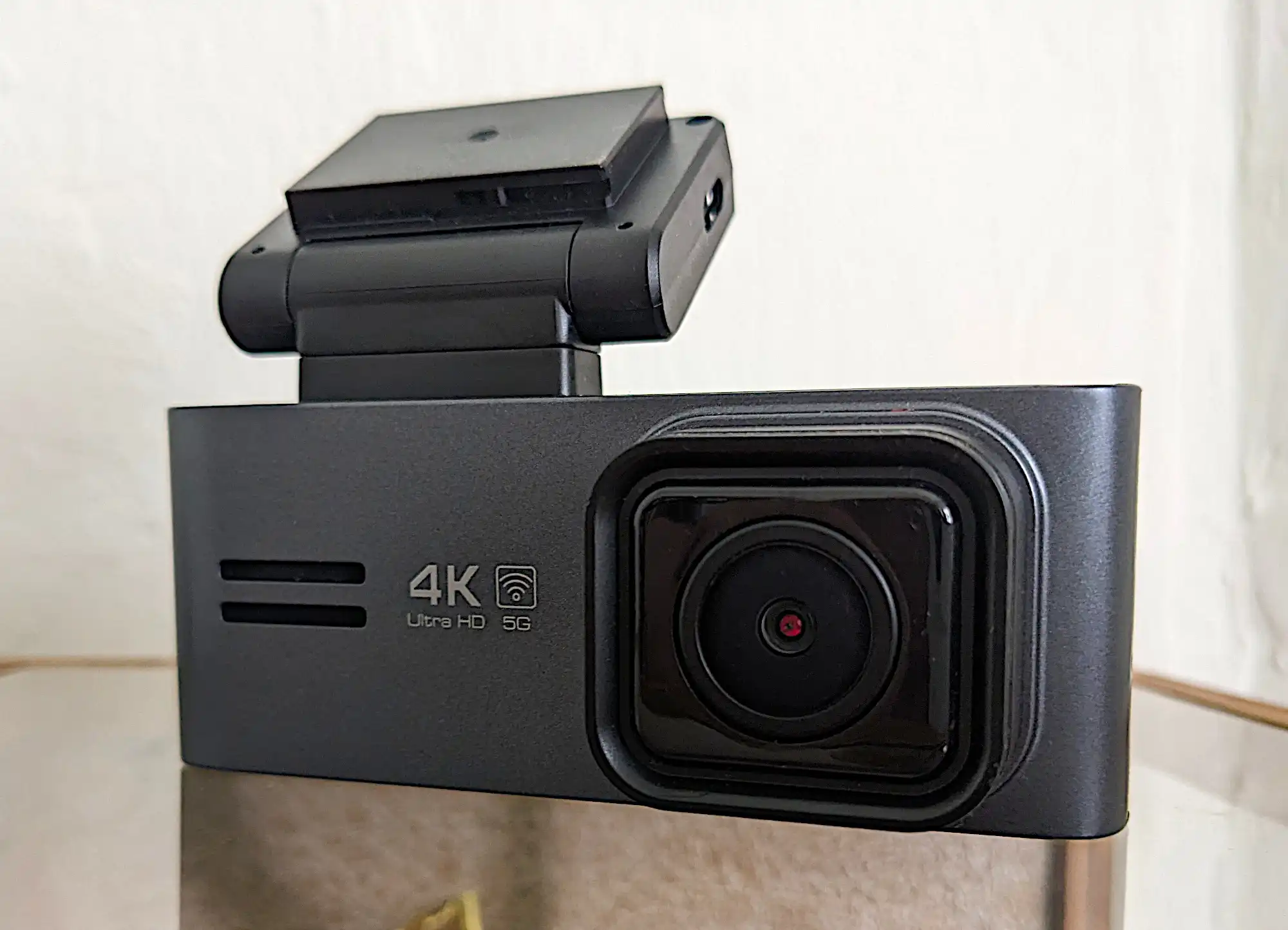Ombar’s 4K competent dash cam duo shows that being a relative unknown in the dash cam field isn’t necessarily a deal-killer. Not only does it take good front and rear video, it has most of the bells and whistles you’d expect (GPS excepted) from a modern dash cam. That the duo is slim, good looking, and only $140 at the time of this writing further heightens the appeal.
Further reading: See our roundup of the best dash cams to learn about competing products.
What are the Ombar 4K’s features?
The rectangular front camera (see top photo) is a 2160p, 30 frames-per-second unit with a 150-degree field of view. The body measures approximately 3.7-inches wide by 1.56-inches tall and is a little over 1.5-inches thick including the lens housing. Elsewhere the body is slightly less than an inch across.
It sports a wide, 3.18-inch color display with five buttons on the bottom that allow you to turn features on and off, as well as navigate the rather extensive menu. The buttons are multi-function, with the main functions illustrated as tiny icons just below the display.
Being familiar with dash cam norms, I found navigation easy, but novices to dash cams should spend some time with the user guide first. The labels are rather hard to read with the camera mounted on the windshield.
The left side of the front-facing camera is home to the micro SD card slot (TF card, U3 or better) and micro HDMI rear-camera port. The Type-C power port is on the captive, vertically swiveling mount body.
The mount body slides into a thin, semi-permanent adhesive plate that attaches to the windshield. I found it quite easy to remove the camera for safe-keeping. One of the easier to mate/unmate configurations that I’ve tried. As there’s no horizontal adjustment of any kind available, take your time orienting the front camera. Same goes for the rear camera.
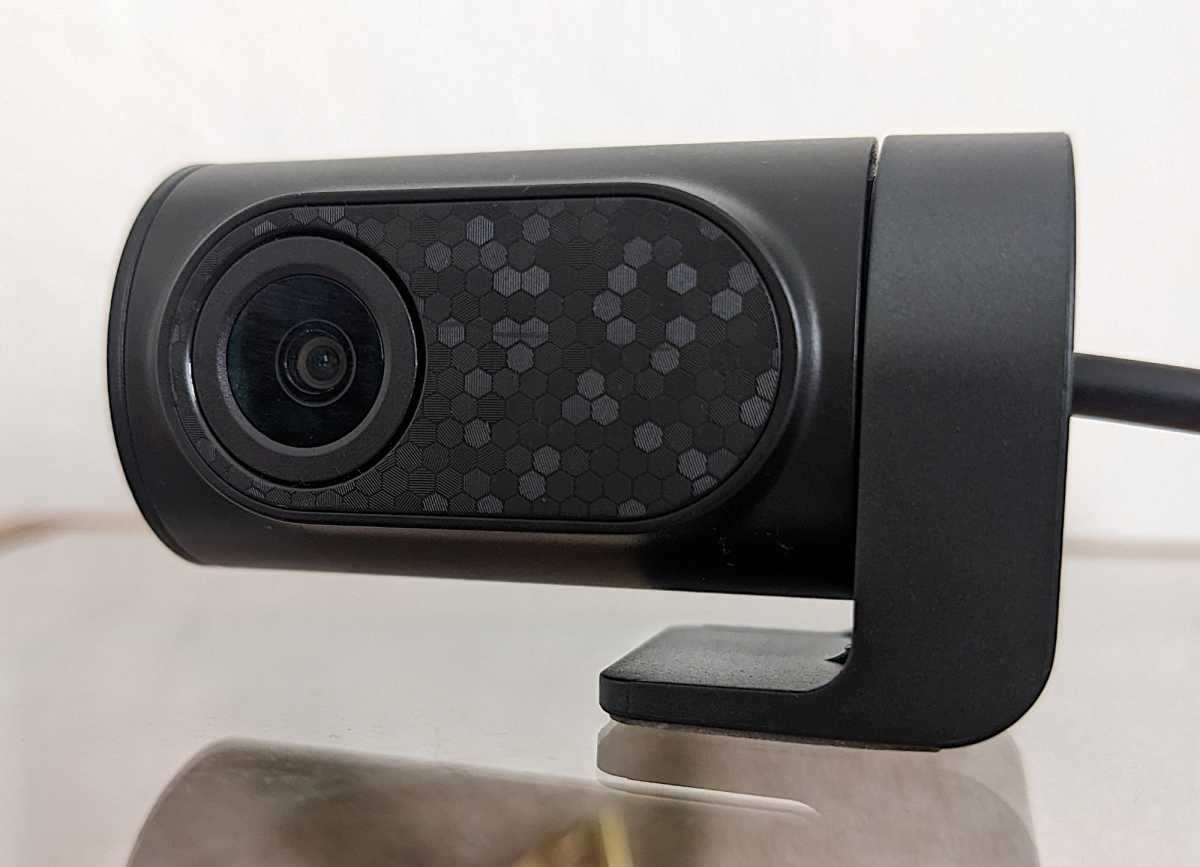
The cylindrical rear camera is 1080p, 30fps, with a 140-degree field of view (shown above), and is around 2.1-inches wide and 1.2-inches thick. It’s permanently attached to its adhesive mount, but the captive cable may be detached from the main cable running from the front camera. Not that that is really any help in removing the camera from the car.
Hint: As always, it’s wise to attach the camera’s cable and power up the rear camera so you can see its view on the front camera’s display before permanently attaching it — I’ve installed cameras upside down several times by omitting this step
While there’s no GPS on board (I thought there would be given the size of the mount, where the GPS module is often housed), there is Wi-Fi so you can connect to your phone and the OnCam app shown below.
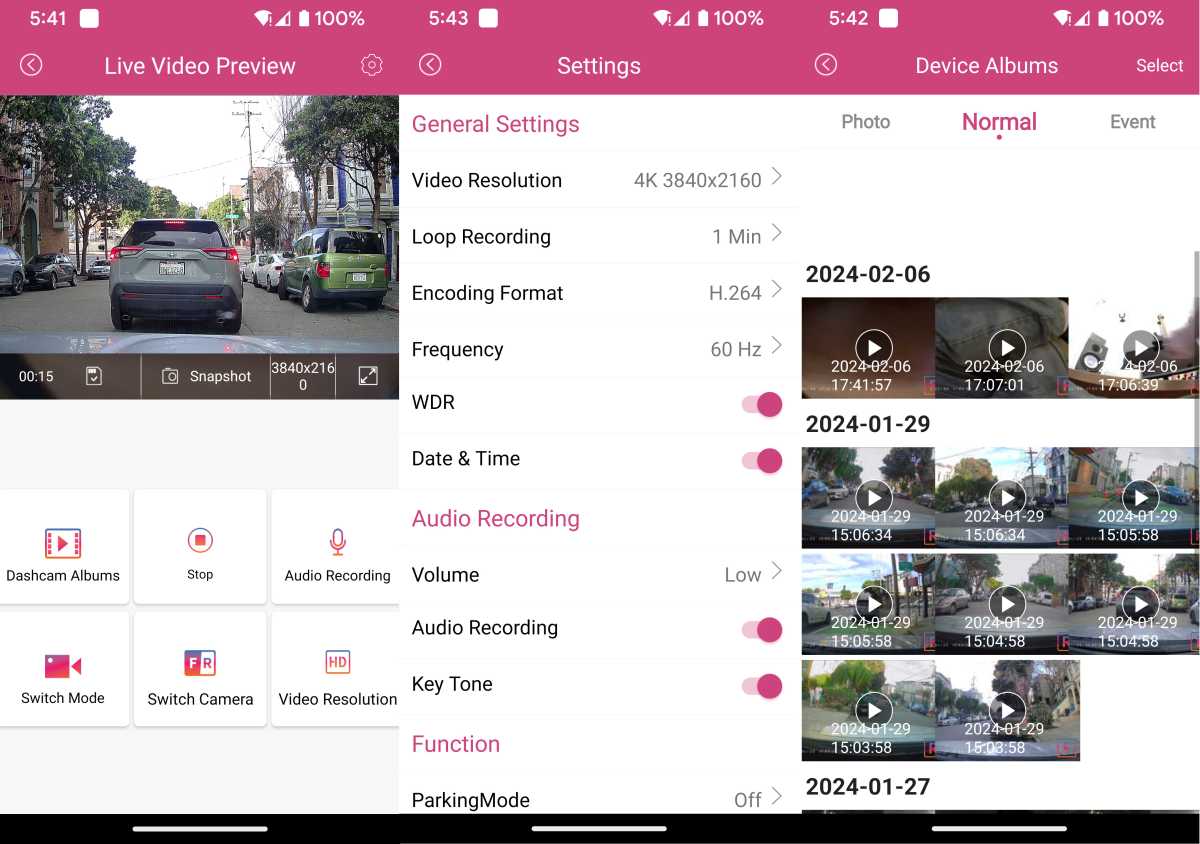
The app is a handier way to change settings and provides a live view as well as playback of previously captured videos. And unlike some cam apps, it connected quickly and without hassle. At least if you don’t consider switching to the dash cam’s Wi-Fi network painful.
How are the Ombar 4K’s captures?
I found the Ombar’s 2160 front day captures quite good, if not the absolute best I’ve seen from a 4K UHD dash cam. Detail is plentiful and the color nicely saturated.
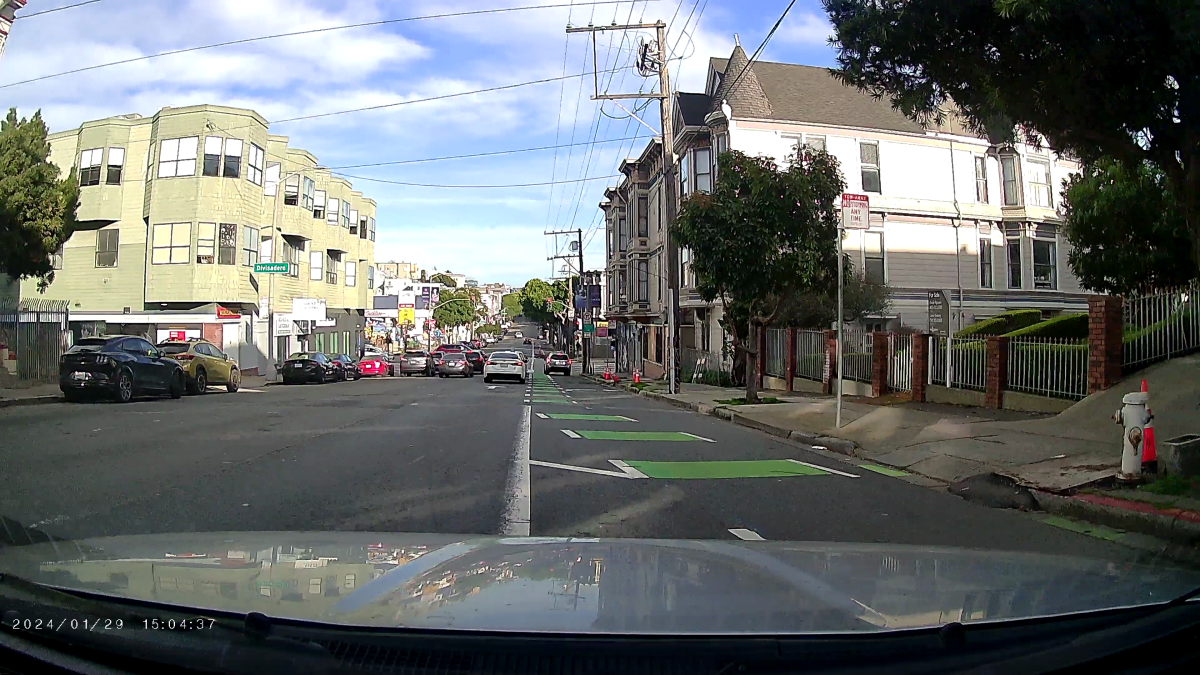
At night there’s still detail in the front captures, but in low-light they get a tad grainy. Especially during the transition from complete low-light to headlights in view. It’s momentary, though, and perfectly understandable.
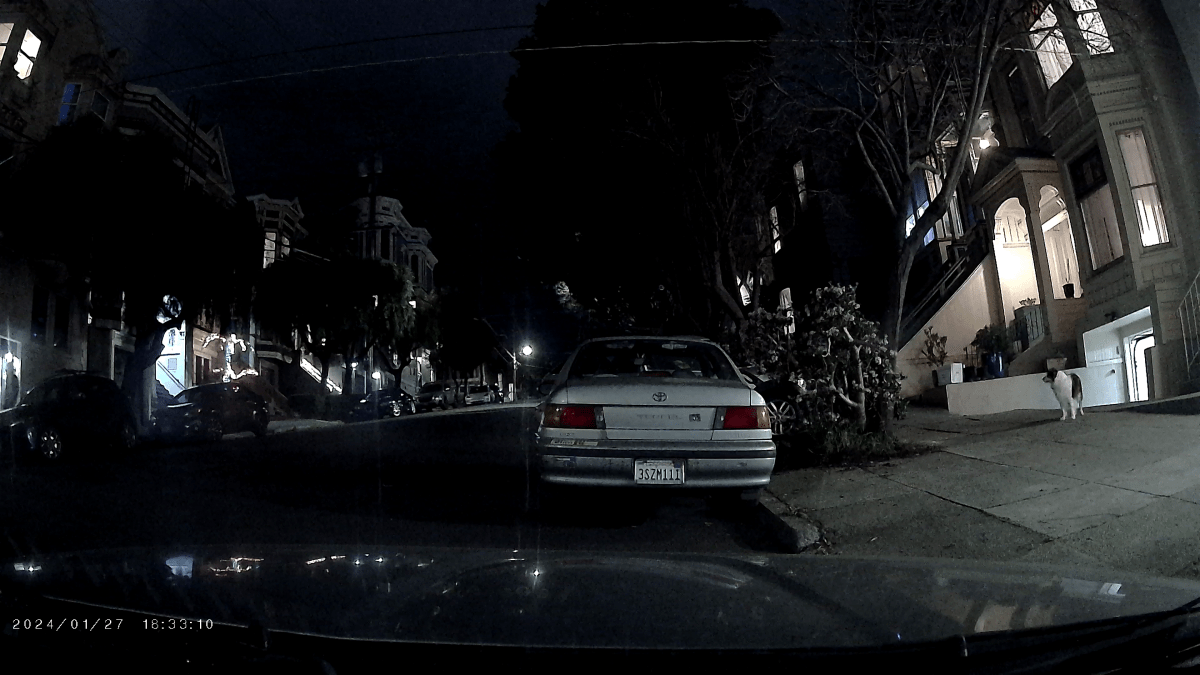
Also, the surrounding areas become significantly darker when the camera compensates for headlights. Happily, however, the details in surrounding areas largely return if you brighten the image in post-production. Good enough.
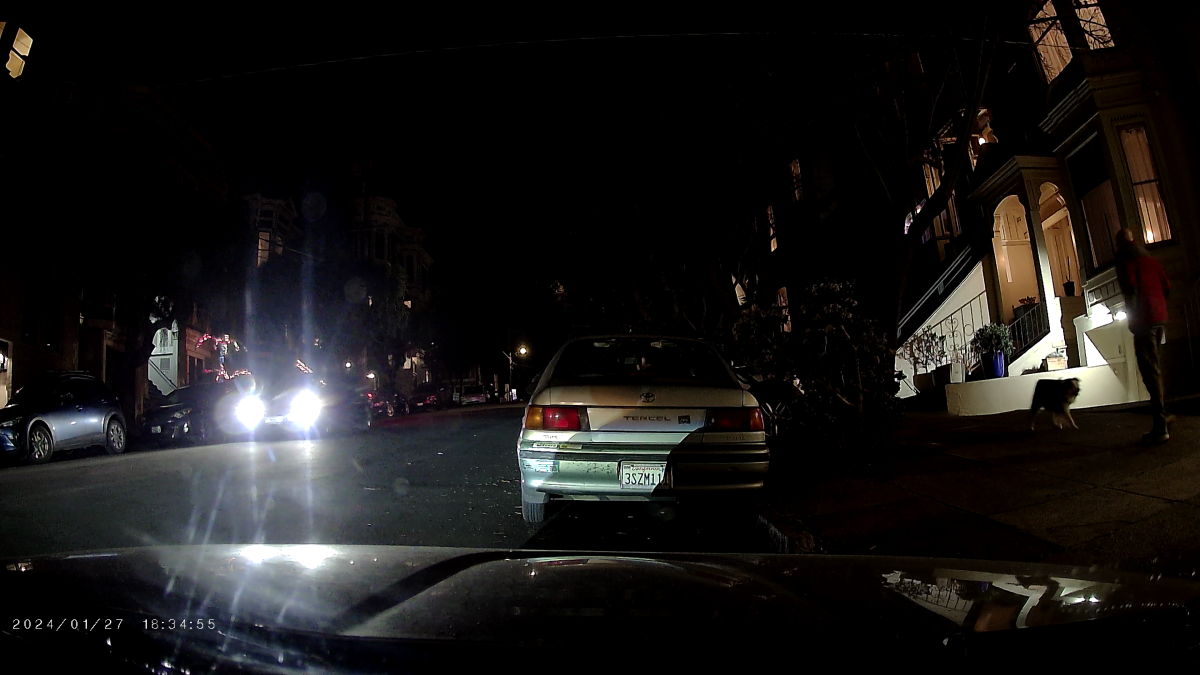
The 1080 captures from the rear camera I’d deem acceptable during the day, though they’re certainly not up to the quality of the front captures, and to a lesser extent, other 1080p cameras I’ve tested.
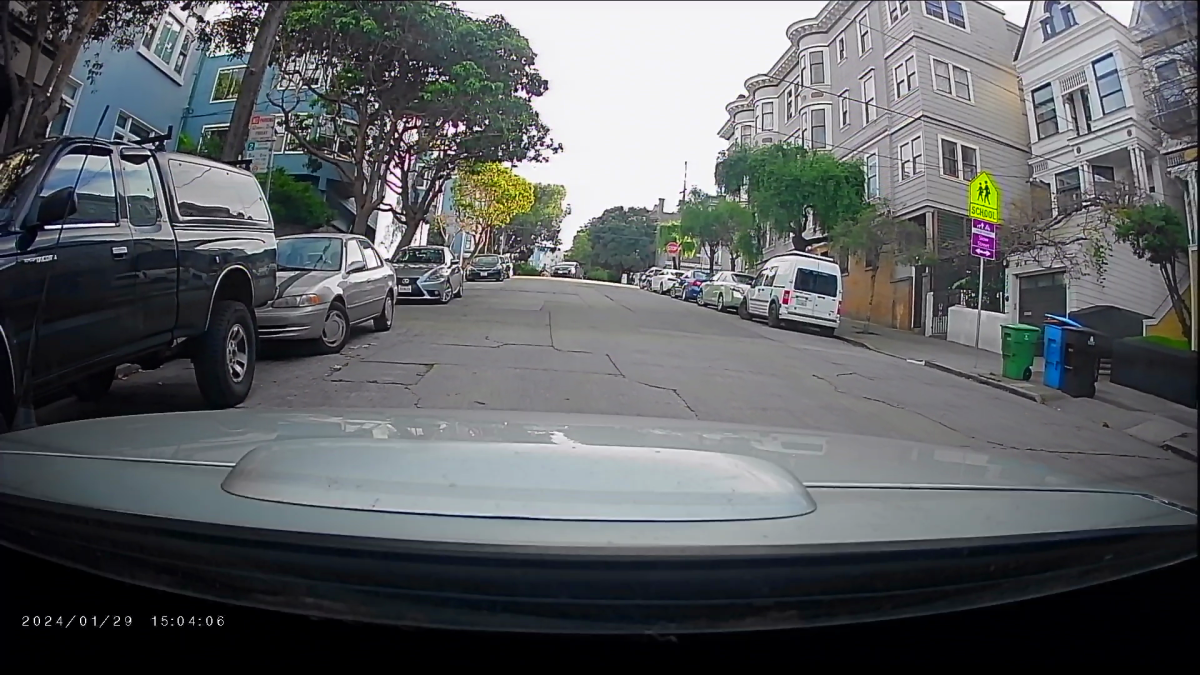
At night (see below) the rear camera couldn’t capture the license plate numbers on a vehicle parked a mere 15 feet away. Note that the fogginess is in fact fog, but it wasn’t heavy enough to obscure so much detail this close.
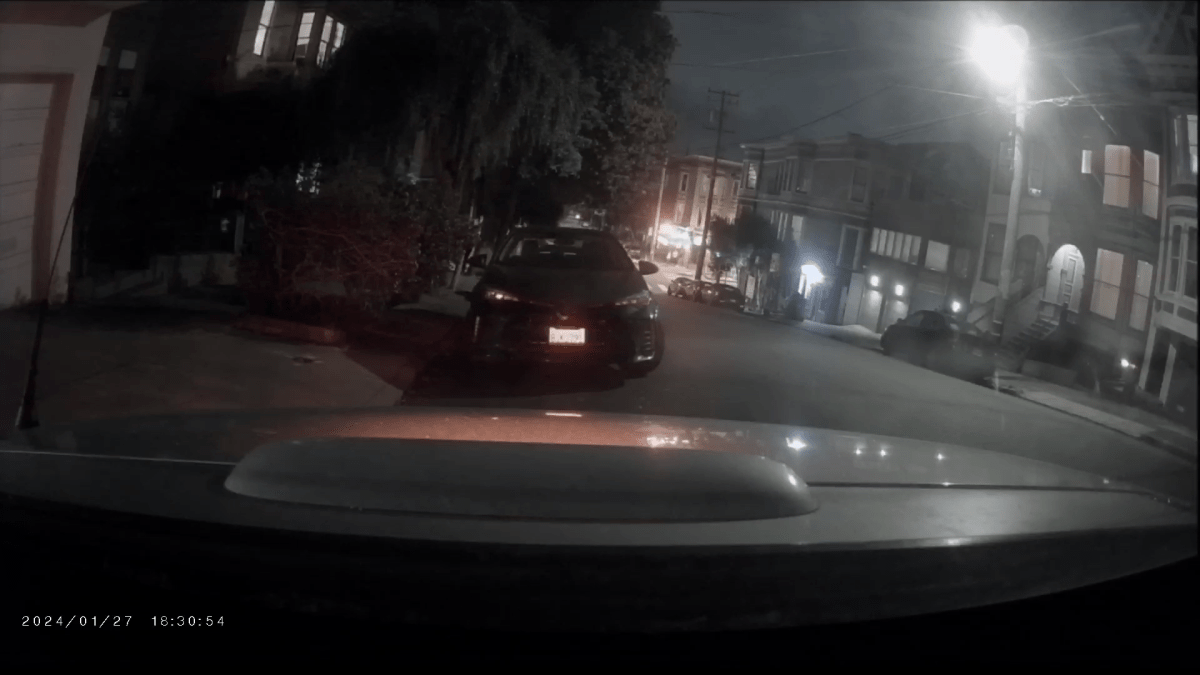
Altogether, detail from the back camera is a tad lacking. Hardly tragic or worthy of a no-buy recommendation, but hardly optimal compared to some of the better competition.
Should you buy the Ombar 4K dash cam?
The Ombar 4K provides a lot of bang for the buck as it’s a handsome piece of hardware that’s easy to install and use. Despite the lack of GPS and the so-so rear captures, I’d put it on my short list if I was bargain hunting.

